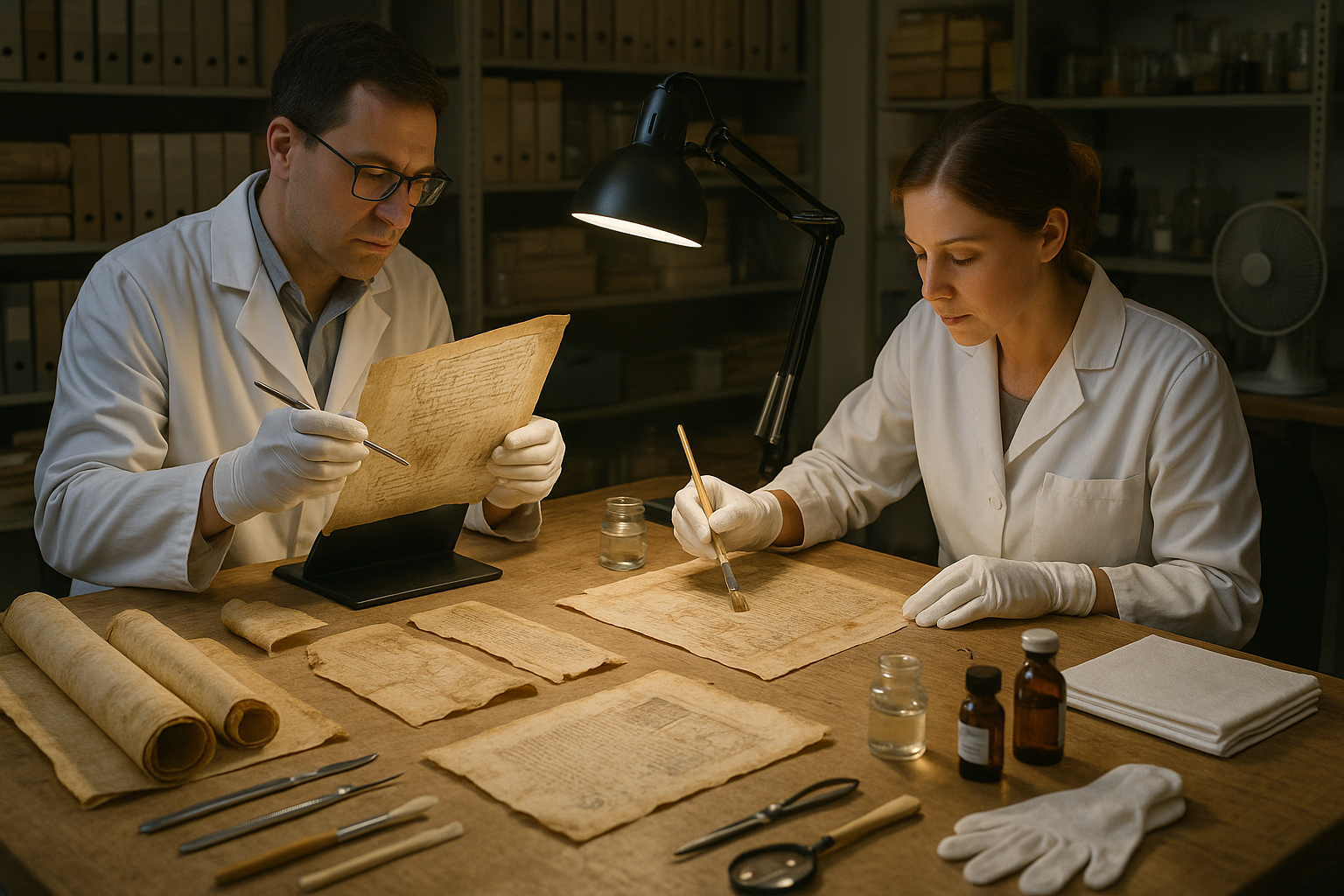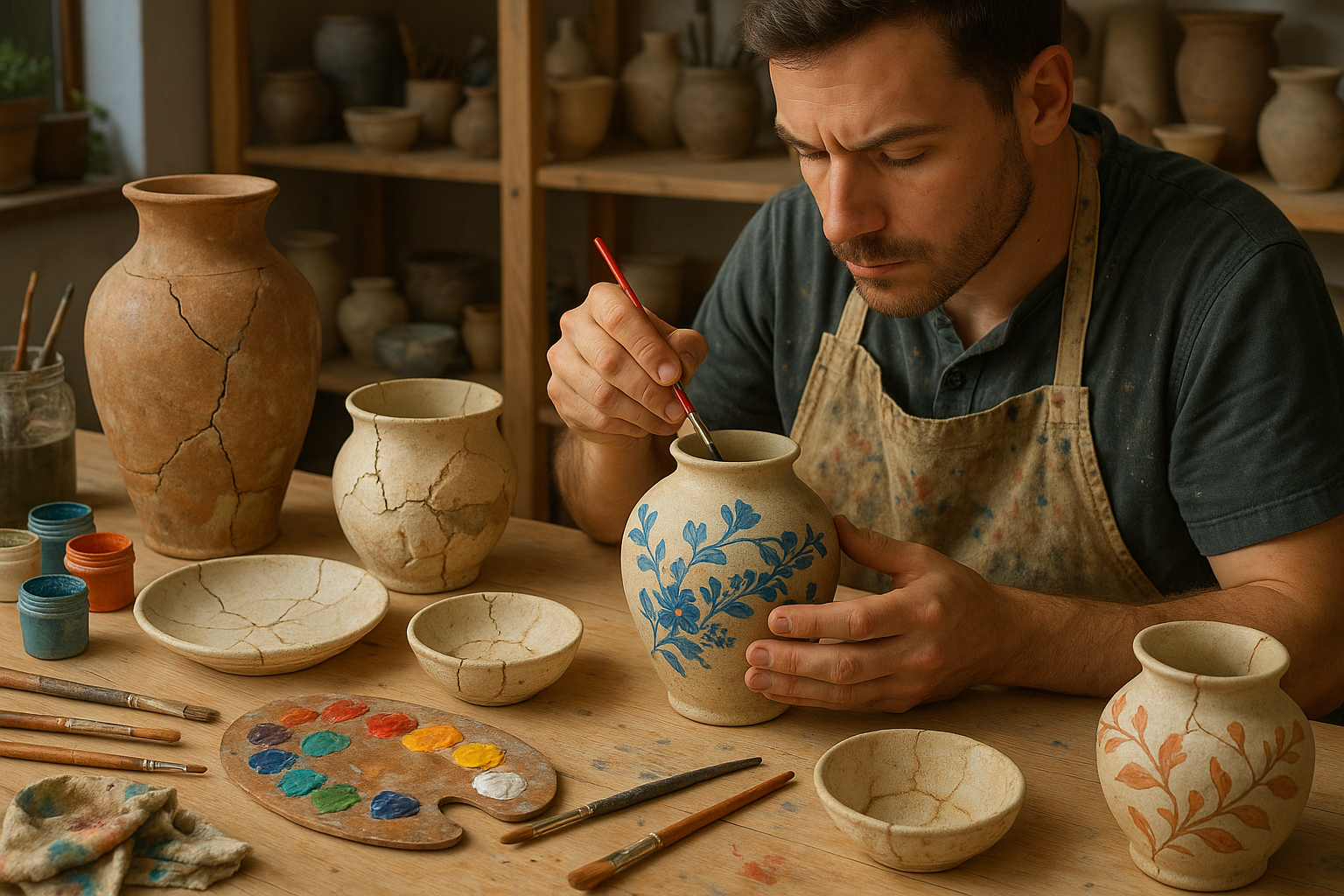Imagine holding a centuries-old manuscript, feeling the delicate texture of its parchment, a material that has withstood the ravages of time. Each page is a testament to history, carrying stories, knowledge, and artistry from eras long past. Yet, preserving these treasures presents a labyrinth of challenges. The world of parchment conservation is both an art and a science, striving to maintain the integrity and beauty of these invaluable artifacts. 📜✨
As we delve into the intricate process of conserving parchment, we uncover the nuances that make it a unique field. Parchment, unlike paper, is crafted from animal skin, usually from sheep, goat, or calf. Its organic nature presents distinct conservation challenges, demanding expertise and precision. Each piece of parchment tells a story not only through its text and illustrations but also through the very material that bears them. This material is sensitive to environmental changes, susceptible to damage from humidity, light, and mishandling.
The stakes are high when it comes to conserving parchment. Libraries, museums, and private collectors are custodians of these irreplaceable artifacts, each holding a piece of our shared cultural heritage. However, the path to preserving these treasures is fraught with difficulties. Conservators must navigate the delicate balance between preservation and accessibility, ensuring these documents remain available for future generations to study and appreciate.
Understanding the Material
At the heart of parchment conservation lies a profound understanding of the material itself. Unlike modern paper, parchment is a living material, reacting to its environment. It expands and contracts with humidity changes, and improper storage can lead to irreversible damage. Conservators must have a deep knowledge of the biological and chemical composition of parchment to address these challenges effectively.
Environmental Challenges
One of the most significant challenges in parchment conservation is controlling the environment in which these artifacts are stored. Temperature, humidity, and light levels must be carefully monitored and regulated. Even slight fluctuations can cause parchment to warp or crack. Advanced climate control systems and meticulous monitoring are essential to preserving these documents in optimal conditions. 🌡️💡
The Role of Technology
Technology plays a crucial role in modern parchment conservation efforts. From non-invasive imaging techniques that reveal hidden details without damaging the material, to advanced data analytics that predict degradation patterns, conservators have a suite of tools at their disposal. These technological advancements allow for more precise interventions, minimizing the risk of further damage while maximizing the information that can be gleaned from these artifacts.
Ethical Considerations
Preserving parchment is not just about maintaining physical integrity; it also involves ethical considerations. Conservators face tough decisions about restoration versus preservation, balancing the need to maintain the artifact’s original state with the desire to restore its readability and aesthetic appeal. These decisions are guided by ethical frameworks that prioritize the artifact’s historical and cultural significance.
The world of parchment conservation is rich and complex, filled with challenges that require a blend of scientific rigor, technological innovation, and ethical consideration. As we explore these themes in depth, we will uncover the intricacies of this fascinating field, shedding light on the efforts to preserve our past for future generations. Join us as we embark on this journey through time, revealing the secrets held within the fragile folds of parchment. 🕰️🔍

Conclusion
In conclusion, the topic of parchment conservation, as detailed in our article, holds significant importance in preserving the vast cultural and historical legacy embedded within these ancient documents. Parchment, a delicate and aging medium, faces numerous challenges that require a nuanced understanding and sophisticated methods to ensure its longevity. By recapping the main points discussed, we aim to reinforce the importance of this subject and inspire further discussion and action among our readers.
Throughout our exploration of parchment conservation, we delved into the historical significance of parchment documents, many of which serve as primary sources for understanding human history. These artifacts provide insight into the social, political, and cultural contexts of the past. Thus, conserving these documents is paramount not only for historical scholarship but also for cultural heritage preservation.
We examined the inherent challenges of conserving parchment, including its sensitivity to environmental factors such as humidity and temperature fluctuations. Parchment, being organic in nature, is susceptible to mold growth and physical degradation over time. These challenges necessitate specialized knowledge and techniques in conservation, ranging from traditional methods to modern scientific approaches.
One of the critical strategies discussed was the implementation of controlled environments where temperature and humidity are regulated. This method helps mitigate the risks of environmental damage. Additionally, the role of technology in conservation cannot be overstated. Techniques such as multispectral imaging and digital restoration have revolutionized the way conservators approach the preservation of these fragile documents, allowing for non-invasive examination and repair.
The article also highlighted the importance of collaboration among conservators, historians, scientists, and institutions. By pooling resources and expertise, stakeholders can develop more effective conservation strategies and share best practices globally. This collaborative approach not only enhances conservation efforts but also fosters a community dedicated to the preservation of history.
Moreover, we emphasized the ethical considerations in parchment conservation. Ensuring the authenticity and integrity of documents while making them accessible to the public is a delicate balance. Conservators must navigate these ethical dilemmas carefully, prioritizing the document’s historical value and the information it holds.
The financial aspect of conservation efforts was also addressed. With limited resources available, prioritizing which documents to conserve and finding sustainable funding sources are ongoing challenges. However, the potential for public engagement and support is significant. Crowdfunding, public awareness campaigns, and partnerships with educational institutions can bolster financial resources and raise awareness about the importance of preserving our past.
In reinforcing the importance of parchment conservation, it is crucial to acknowledge the broader implications of this work. Preserving these documents not only safeguards historical information but also connects us to our shared human heritage. Each conserved document represents a link in the chain of history, offering future generations the opportunity to learn and grow from the past.
As you reflect on the insights gained from this article, consider the role you can play in supporting parchment conservation efforts. Whether through academic pursuit, financial support, or simply spreading awareness, each action contributes to a larger movement dedicated to preserving our cultural legacy. We invite you to share your thoughts and engage with us in this important conversation. Your comments and ideas are valuable in driving forward the efforts to overcome the challenges of parchment conservation. 📜✨
Furthermore, we encourage you to share this article with others who may be interested in the topic. By broadening the reach of this information, we can foster a more informed and active community committed to preserving history. Let us work together to ensure that the stories of the past remain accessible and intact for generations to come.
For those interested in diving deeper into the subject, we recommend exploring additional resources. The International Council on Archives (ICA) and the American Institute for Conservation (AIC) offer a wealth of information and support for conservation professionals. Their continued efforts provide valuable guidance and foster a global network of conservation enthusiasts.
In closing, preserving the past is a noble endeavor that requires collective effort and dedication. By understanding the challenges and applying innovative solutions, we can overcome the obstacles faced in parchment conservation. Let us cherish and protect our shared history, ensuring that the knowledge and stories contained within these ancient documents endure for all time.




